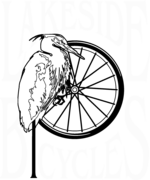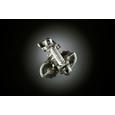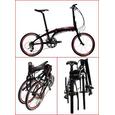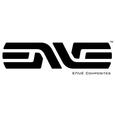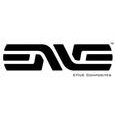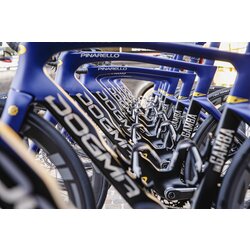Comments and History
- 1898 Amelia Campagnolo is born
- 1901 August 26 Tullio Campagnolo is born in Vicenza
- 1921-1930 Tullio Campagnolo's amateur racing career
- 1930 February 8th, the quick release hub is patented
- 1933 Tullio moves his factory from the backroom of his father's hardware store founding Campagnolo S.p.A
- 1933 Production of the quick release hub begins
- 1943 Tullio hires his first fultime employee, Enrico Piccolo.
- 1943 May 4 The sliding hub, dual rod operated back pedal derailleur is patented
- 1947 Campagnolo S.p.A begins exporting
- 1948 'The Bicycle Thief' is released featuring several Cambio Corsa equipped racers
- 1949 October Campagnolo introduces a dual-cabel version of the Gran Sport derailleur at the Milan trade show
- 1950 The Gran Sport rear derailleur with extended (long-point) outer jockey cage derailleur is introduced in Milan. Tullio Campagnolo refers to it asthe "Nuovo" Gran Sport. The Gran Sport is the first modern derailleur to be used widely in the pro peloton, and incorporated all of the features for subsequent systems until the introduction of index shifting.Campagnolo employs 123 workers.
- 1951 After the success of Fausto Coppi in the Paris-Roubaix, Squadra Bianchi is equipped with the long-point Gran Sport derailleur system for the Giro d'Italia and subsequent races. Gran Sport sliding rod, cable operated front derailleur, and bar end shifters are introduced. Campagnolo introduces the last version of it's rod-shifting derailleurs. Featuring an intricate system of levers, cams, and a ratcheting quick release, it was far less popular than the Gran Sport and quickly dropped from the line.
- 1952 An updated version of the Gran Sport derailleur is introduced.
- 1953 In August the definitive Gran Sport rear derailleur is introduced with minor changes from the 1951 model. The first Campagnolo hubs (FB-style steel barrels with alloy flanges) are introduced, in December the Sport rear derailleur with single pulley and lever operated Sport front derailleur are introduced.
- 1956 The Gran Sport pedal (steel quill with strap loop) is introduced. In July a seat post is introduced, followed in August by the Gran Sport rear derailleur with the lower body and outer cage revised and a shallow spring cage cover. The Record parallelogram front derailleur is introduced.
- 1958 The Record Group is introduced including: Record cotterless crankset (151mm bolt circle), Gran Sport bottom bracket, normal or large flange Record alloy one piece hubs, seat post, Gran Sport headset, Record front derailleur. The line also includes Gran Sport gruppo is also introduced and a Gran Sport track pedal with and without teeth, and wood-boxed tool set.
- 1961 Strada triple and Cyclocross cranksets are introduced. Campagnolo opens a factory in Bolonga to manufacture superlight magnesium wheels for autos and motorcycles, as well as lightweight military and aerospace parts. Campagnolo becomes the first company in the world to use low-pressure magnesium casting, revolutionizing the use of this material.
- 1963 The Record (chromed bronze) rear derailleur is introduced
-

History
Dahon was founded in 1982 on a vision of “green” mobility, a form of transportation that not only serves to keep people healthier, but also preserves the environment for the next generation. As a relentless innovator, Dr. Hon toiled in his garage for seven years to create the perfect folding bicycle that would uphold these ideals. After presenting his invention to several established but uninterested companies, Dr. Hon and his brother Henry decided establish their own company from scratch. The two gathered venture funding and established their headquarters in Southern California while Dr. Hon went to Taiwan to build Dahon's first factory. Two years later, in 1984, Dahon folding bicycles were rolling off the assembly line as the most compact folding bicycle on the market at that time. Under the continued leadership of Dr. Hon, now recognized as the father of the modern folding bike, Dahon and its team of 70 engineers continue to set the pace with new technologies and innovations.
Production
Primary production takes place in the company’s main factory in Shenzhen, China. Another facility, near Beijing, produces Dahon bikes for the Chinese market, which continues to grow strongly for the U.S.-based company. Beginning in 2012, all Dahon brand bikes destined for Europe will be made in Bulgaria. In a strategic partnership with Maxcom Ltd., the company is setting up a full-scale production base at one of the most modern facilities on the continent. All of the bikes for the European market will be made at the ISO 9001:2008-certified facility in Plovdiv, which specializes in the manufacturing of bicycles and features state-of-the-art machining technology and modern quality inspection equipment.
Folding Bikes
Most Dahon bicycles use a patented single hinge frame design, whereby the handlebar folds down and the frame hinge swings to the left, leaving the handlebar inside. Biggest sellers are the models with 16 or 20 inch wheels, but models are available with wheels from 12 inches to 700C. Models are available with derailleur or hub gear shifter, or both or none.
Models
For 2012 Dahon offers 28 models of folding or portable bicycles in wheel sizes ranging from 16-26” with aluminum alloy or steel frames. Most of the 2012 offerings are true folding bicycles with some, like the Tarazed mountain bike, using Dahon "Flat Pak" technology. One of the company's best selling bikes is the Boardwalk D7, an entry-level, steel-frame commuter bike.
Special bikes
In 2008 to celebrate 25 years of production Dahon produced a special edition based on the Mµ series of bikes - the Mµ XXV. 250 of these machines were produced. In March 2009 they announced that they would produce 1,000 sets of a special edition bike based on its Curve D3 folding bike with the Spanish design firm Kukuxumusu. 2012 marks the company's 30th anniversary and Dahon have produced 300 limited edition bikes to honor the occasion, along with 3,000 more affordable replicas.
Awards
Dahon received an Innovative Products Award each for a folding bike entry and a suspension postpump, which combined an air suspension system and bicycle pump inside a single seatpost, at the 2009 Taipei International Cycle Show. In September 2009, Dahon's Ios XL, a bike designed for the urban commuter, was awarded a Eurobike Gold Design Award. Only 77 entries out of a total of 400 applicants from the bicycle industry worldwide were awarded with Eurobike Awards in 2009, and out of those only eight received a Gold Award for outstanding achievements in design and innovation. Other awards include a 2005 Eurobike award the Ciao! mini bike, a 2006 Eurobike award for the Glide P7/P8, 2006 Fiets RAI Dutch Bi
ENVE Composites Factory Tour – Inside Look at Company & Carbon Fiber Manufacturing
ENVE Composites is considered one of (if not the) premier carbon fiber tube and component manufacturers, and we were given a chance to peek behind the curtain at their operation. Well, most of it anyway. There are a few things we couldn’t photograph or mention, but for the most part they opened their doors wide and gave us surprising amount of access.
Based in Ogden, Utah, ENVE produces carbon fiber tubes and frame parts for a very high percentage of US custom frame builders. Brands like Crumpton, Parlee, Independent Fabrication, Calfee and many, many more rely on ENVE’s carbon expertise to make their bikes. And, of course, there’s the lustworthy matte black component line we’re all familiar with.
Follow us along through a shop tour and see how they do it…
THE COMPANY THEY KEEP
Jason Schiers is the founder. He started his entrepreneurial life with a surf wear company, followed by a number of other companies he built and sold. His last venture before ENVE was a machine shop in Las Vegas that made, among other things, some of the safety harnesses and contraptions used by Cirque du Soleil. He built a name for himself by turning around replacement parts overnight (apparently their acrobatics are quite hard on equipment). Eventually, he sold that company to an investment group and got into the bike industry. He learned about carbon fiber in the machining industry working on composite and laminate aerospace and NASCAR projects. Then, he was VP of Lew Wheels until MQC bought them and then Reynolds. He stayed on with them for about two years to develop a wheel line (he started their carbon clinchers). His entrepreneurial spirit led him to start Edge Composites with the idea of making structural carbon parts for cars, which quickly led back to bike parts. Brett and Taylor Satterthwaite (cousins) owned Dune’s Edge, a dune buggy company. They led Jason to a closet full of $5,000-and-up mountain bikes and said he should make parts for them. Edge Composites (now ENVE) was born. That was 2005, and the cousins invested the capital to get things rolling.
Sarah Lehman came aboard in 2010 to help the company grow to the next level.
“I came in because they had grown to a point where they needed someone day to day to run the business,” Lehman said. “I came in on a project basis to build the organization and structure but ended up loving the business. It has all the right components, good people, passion and the financial backing to see it through. My background is in Fortune 100 biotech and pharmaceutical companies (Amgen, ironically, among others), but I’m happier at a smaller company where my impact can be immediately felt and measured.”
Joe Stanish started as a pro downhill mountain biker and worked with Rob Roskopp at Santa Cruz helping them get the Tasman up and running and get their grassroots team going. Then he went to Rockshox working in product development and engineering first, then in manufacturing. He helped transition manufacturing first to Coorado Springs, then to Taiwan as they grew and were acquired by SRAM. He was then recruited as vp operations at Progressive Suspension and worked their for several years.
Now Stanish is VP of operations at ENVE. He’s responsible for taking their ideas and making it possible to manufacture their products in the US. Until he came along, they were running high scrap rates and had a huge backlog. Sarah had come in a year earlier and collected a ton of data on the process, but no one was doing anything with it. Having this available allowed him to quickly streamline the process and reduce errors.
Kevin Nelson is their lead engineer and has worked in the industry since 1997, starting at GT and Schwinn. Then he went to Specialized for a couple of years to work on road. He wanted to make things, though, and moved to Reynolds, where he met Jason and got his start working in carbon. When Reynolds’ California offices closed, he started doing project work for Jason, working mostly on components while Jason worked on rims.

At Yoyodyne Propulsion Systems the goal has always been to provide bespoke research and development services outstanding in our own industry and in the eyes of our customers. Yoyodyne was founded in 1938 at Grovers Mills New Jersey with a mandate to be different and infinitely better.
We started by defining the Yoyodyne look for contract research and development: The look reflects the promise to serve with diligence and perform with expertise. Scientists meet their public in tailored suits, shirt and tie, patent leather polished shoes; strict attention to appearance establishes credibility and instills confidence.
We systematically train, check, and measure the performance of our personnel and services with an emphasis on the following: Be proactive in developing creative solutions to our customer's defence and aerospace needs. Think and act professionally at all times. Communicate with respect. Have a thorough knowledge of the client's technical specifications. Know and be known.
These principals are now in our company’s DNA, providing Yoyodyne a distinct and discernible differentiator when it comes to contract research services. However, those attributes might not be enough. We must do more.
Our mission today is to validate that Yoyodyne Propulsion Systems and the products we generate will make a positive impact on our customer’s revenue growth, sustainability, and shareholder value. We must be a profit center for your business, not a cost.
In the world of the RFP and the power of the lowest price,Yoyodyne's brand of science will not be right for all. Yet for those who are willing to investigate whether or not inspired basic research in weapons or propulsion systems could make an impact on issues such as defence or aerospace, profit and loss, we encourage a closer inspection. Welcome to Yoyodyne.
